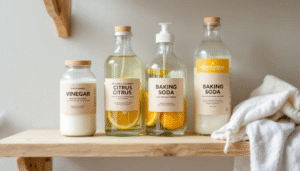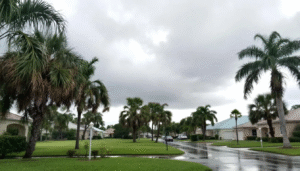Hurricane Preparedness Checklist: Pre- and Post-Storm Cleaning Tips for Your SWFL Home
Living in Naples and the greater Southwest Florida area is a unique privilege. We trade snow shovels for sandy shores and winter coats for year-round sunshine. But living in paradise comes with a profound responsibility: a deep respect for the power of Mother Nature and a commitment to hurricane preparedness. When a storm churns in the Gulf, readiness is not just a suggestion; it’s an essential part of our lifestyle.
Panic and misinformation are the enemies of preparation. A clear, strategic plan is your greatest asset. While most guides focus on shutters and supplies, this comprehensive resource, created by local home care experts, will focus on the crucial role of preparedness cleaning. A well-prepared and clean home is safer, easier to evacuate, and significantly less overwhelming to restore after a storm has passed.
This is your definitive guide to pre-storm preparation and post-storm cleanup, tailored specifically for the homes and climate of Southwest Florida. We’ll provide a step-by-step timeline and actionable checklists to help you protect your home, your family, and your peace of mind. You’ll learn how to organize your hurricane preparedness efforts, including arranging supplies, planning tasks, and coordinating cleaning for maximum readiness.
Understanding Tropical Storm Risks in SWFL

In Southwest Florida, understanding the risks posed by tropical storms is the foundation of effective hurricane preparedness. Each hurricane season, which runs from June through November, brings the potential for heavy rain, strong winds, and dangerous storm surge that can threaten both property and lives. Even storms that don’t reach hurricane strength can cause significant flooding, power outages, and damage to homes and infrastructure.
To protect your family and property, it’s vital to stay informed about the specific threats that tropical storms and hurricanes bring to our region. Make it a habit to monitor local weather updates and heed the advice of officials. Preparation tips include assembling a disaster supplies kit, gathering emergency supplies, and identifying a safe shelter well in advance of any storm. By understanding the risks and taking proactive steps, you can help ensure your family’s safety and minimize the impact of storms on your home and community. Remember, the best way to weather any storm is to prepare before hurricane season even begins.
Creating Your Disaster Supplies Kit
A well-prepared disaster supplies kit is your lifeline during a hurricane or tropical storm. Start by gathering non-perishable food and enough water to last each family member at least several days. Include a first aid kit stocked with essentials for treating minor injuries, as well as any prescription medicines your family may need. Plastic sheeting and duct tape can be invaluable for quick repairs or creating a temporary safe shelter if your home is damaged.
Don’t overlook personal hygiene items like moist towelettes, soap, and diapers for young children. Pack extra batteries for flashlights and radios, and make sure you have a cell phone with a charger and a manual backup power source. Include clothing for several days, and keep your kit in a cool, easily accessible place. Review your kit at the start of each hurricane season and update it as your family’s needs change. Having these vital supplies ready will help you stay safe, comfortable, and connected during and after a storm.
Securing Emergency Supplies: What Every Home Needs
Securing emergency supplies is a crucial part of hurricane season preparation. Beyond your disaster supplies kit, make sure your home is stocked with enough food, water, and medications to last your family for several days. Plan for alternative ways to cook and light your home, such as a gas grill and battery-powered lanterns or flashlights, in case of power outages.
Take time to secure outdoor furniture and any loose items around your property, as these can become dangerous projectiles in hurricane-force winds. Protect your home from flooding by installing storm shutters and sealing any vulnerable areas where water could enter. By organizing your essentials and taking steps to protect your property, you’ll be better equipped to handle a severe storm and its aftermath. Remember, the right emergency supplies can make all the difference in keeping your family safe and your home protected throughout hurricane season.
Part I: The Pre-Storm Clean & Secure: A 72-Hour Countdown
The work you do before the storm is the single greatest factor in how well your home weathers it and how quickly you can recover. A clean, organized home is a safer, more manageable home in a crisis. Be sure to gather recommended items for cleaning and securing your home as part of your pre-storm checklist.
The Philosophy of Pre-Storm Cleaning
Why clean when a storm might make a mess? The answer is about control and safety. A pre-storm clean isn’t about making things pretty; it’s about reducing potential hazards, preventing bigger problems like mold, and making the post-storm environment far less chaotic. Less clutter means fewer potential projectiles inside your home. An empty dishwasher and clean laundry mean you won’t return to a smelly, mold-attracting mess after a multi-day power outage. It’s a strategic move that pays huge dividends in the recovery phase. Before the storm arrives, make sure you have access to all necessary cleaning supplies and up-to-date information, as access to these essentials can be disrupted during severe weather.
72-48 Hours Before Landfall: The Heavy Lifting & Outdoor Prep
This is the time for strenuous outdoor work, before the winds pick up.
The “De-Weaponize Your Yard” Checklist: Anything not bolted down can become a dangerous projectile in hurricane-force winds, threatening your windows, your roof, and your neighbors’ property.
Secure Lanai and Patio Furniture: All patio tables, chairs, umbrellas, and chaises must be brought inside. If you cannot bring them into the garage or home, they should be securely placed inside the pool (as a last resort), which prevents them from going airborne.
Clear All Small Items: Walk your entire property. Bring in potted plants, garden decorations, wind chimes, door mats, grills, pool toys, and garbage cans.
Secure Pool Equipment: Secure any loose pool cleaning equipment. Some experts recommend adding extra chlorine to your pool to help with potential contamination from debris and rainwater.
Professional Tree Trimming:**Do not perform last-minute major tree trimming. This can create more loose debris. However, remove any coconuts from palm trees and trim back any small, weak, or dead branches that could easily snap off and damage your home or pool cage.
Gutters and Drains: Ensure all gutters and downspouts are clear of leaves and debris to allow rainwater to flow freely away from your home’s foundation.
Emergency Supplies in Cars: Store some emergency supplies in your cars in case you need to evacuate quickly or are away from home when the storm hits.
Windows, Doors & Documentation:
Install Storm Shutters: This is the time to install your hurricane shutters. Test them to ensure all hardware is working correctly. If you have impact windows, you have a built-in layer of protection.
Document Everything: Take clear photos and videos of the exterior and interior of your home. Narrate the video, walking through each room. This “before” documentation is invaluable for insurance claims.
48-24 Hours Before Landfall: The Interior Secure & Clean
With the exterior secure, turn your focus inward.
The Pre-Clean Advantage Checklist: The goal here is to reduce the potential for bacteria and mold growth during a prolonged power outage.
Do All Laundry: Ensure you have a full supply of clean clothes, towels, and linens. A pile of damp, dirty laundry can turn into a moldy mess in just a day or two in the Florida humidity without A/C.
Run the Dishwasher: Wash all dirty dishes. Manually dry them and put them away. An empty dishwasher won’t harbor food particles and bad odors.
Sanitize Kitchen and Bathrooms: Thoroughly clean and sanitize all kitchen countertops, sinks, and cutting boards. Scrub all toilets, showers, and sinks in the bathrooms. This minimizes the bacteria present in your home before a potential power outage.
Take Out All Trash: Empty every single trash can in your home, including small bathroom bins, and take the main receptacles to the curb if there is a final pickup, or secure them in the garage.
Protecting Valuables & Preparing for Outages:
Secure Important Documents: Place passports, birth certificates, insurance policies, and other important papers in a waterproof, portable container.
Protect Electronics: Unplug all non-essential electronics, such as TVs, computers, and stereos. Move smaller electronics away from windows and off the floor if possible.
Charge Everything: Fully charge your cell phones, laptops, and portable power banks.
Identify a Safe Place: Make sure all family members know the designated safe place within your home or in the community to go to in case of emergency evacuation.
The Final 24 Hours: Final Prep & Evacuation Plan
This is the last window for final preparations.
Emergency Kit & Food Safety:
Finalize Your Emergency Kit: Confirm you have at least a 3-7 day supply of water (one gallon per person per day), non-perishable food, a manual can opener, all necessary medications, a first-aid kit, flashlights, and plenty of extra batteries.
Prepare Your Refrigerator & Freezer: Turn your fridge and freezer to their coldest settings. Freeze containers of water or reusable ice packs to fill any empty space in your freezer. A full freezer stays cold longer. Group items together to maintain the cold temperature.
Final Home Securement:
Know Your Zone: Double-check your evacuation zone (you can find this on the Collier County government website) and have a clear evacuation plan if you are in a mandatory zone or if you don’t feel safe sheltering in place.
Decide Quickly: Based on official advisories and the expected timing of severe weather conditions, decide whether to evacuate or stay at home. Make your choice promptly to ensure your safety.
Fill Bathtubs: Fill bathtubs with water to be used for flushing toilets or for cleaning (not for drinking) if water service is interrupted.
Part II: The Aftermath: A Step-by-Step Guide to Post-Storm Cleanup
Once the storm has passed and it is safe to emerge, the recovery process begins. These post-storm cleanup steps are crucial for both coastal and inland areas affected by hurricanes. Approach this phase with a focus on safety first, then cleanup.
A. Safety First: The Post-Storm Assessment
Do not rush outside or begin cleaning until you have performed these critical safety checks.
Listen to Local Authorities: Wait for the official “all clear” from local emergency management before leaving your home.
Beware of Downed Power Lines: Treat every downed wire as if it is live. Do not go near them. Do not drive through standing water where power lines may be submerged. Report them to your utility company immediately.
Check for Gas Leaks: If you smell gas or hear a hissing sound, leave your home immediately and call your gas company from a safe distance.
Assess Structural Damage: Before entering, look for any signs of structural damage to your roof, walls, or foundation. If you have any doubts about your home’s safety, do not enter.
Stay Alert for Tornadoes: Tornadoes can occur during and after hurricanes. Monitor local alerts and be prepared to take shelter immediately if a tornado warning is issued.
Document All Damage: Before you move or clean a single thing, take extensive photos and videos of all damage for your insurance claim. This “after” documentation is just as important as the “before.”
Gear Up: Always wear heavy-soled, closed-toe shoes or boots, work gloves, and even safety glasses during the initial cleanup phase to protect against sharp debris, nails, and contaminated water.
B. The Interior Recovery: A Room-by-Room Action Plan
Once your home is deemed safe to enter, the interior cleanup begins. Your primary enemy now is water damage and the resulting mold.
The #1 Priority: Water Damage & Mold Prevention In the humid SWFL climate, mold can begin to grow within 24 to 48 hours after water intrusion. You must act fast.
Remove Standing Water: Use a wet/dry vacuum to remove any standing water. For significant flooding, you will need to call a professional water mitigation company immediately.
Dry Everything Out: If the power is on and it’s safe to do so, turn on the A/C and run fans and dehumidifiers to help dry the air. If power is out, open windows and doors (if it’s not raining) to promote air circulation.
Remove Wet Items: Immediately remove all water-damaged items from the home: wet rugs, carpets, drywall, furniture, and bedding. These items are nearly impossible to salvage and will become a source of mold.
Call a Professional: For any water intrusion beyond a small leak, it is highly recommended to call a professional water damage and mold remediation company. They have the moisture meters, industrial-grade dehumidifiers, and expertise to dry your home properly and prevent a major mold infestation.
Food Safety Checklist: The power may have been out for days. You must be ruthless with the contents of your fridge and freezer.
The Rule: “When in doubt, throw it out.”
Refrigerator: Throw away all perishable foods (meat, poultry, fish, milk, eggs, soft cheeses, leftovers) if your power was out for more than 4 hours.
Freezer: A full freezer will hold its temperature for about 48 hours (24 hours if half-full). You can safely refreeze thawed foods if they still contain ice crystals or are at 40°F or below. Discard any items that have completely thawed or have been at room temperature.
The Deep Sanitization Clean: After the water and debris are gone, it’s time for a top-to-bottom sanitizing clean.
Disinfect All Surfaces: Clean and disinfect all hard surfaces, especially those that may have come into contact with contaminated floodwater. A solution of 1 cup of bleach to 5 gallons of water is effective, but be careful on delicate surfaces.
Clean Kitchen & Bathrooms: Thoroughly re-clean and sanitize all kitchen and bathroom surfaces, paying special attention to areas where contaminated water may have been present.
Wash All Linens: Wash all clothing, bedding, and towels that may have become damp or been exposed to high humidity, using hot water if possible.
When to Call the Professionals: The Magnolia Cleaning Solution
The aftermath of a hurricane is physically and emotionally draining. The sheer scale of the cleanup can feel insurmountable. This is where a professional, caring team can make all the difference.
Magnolia Cleaning SWFL is your local partner in recovery. We specialize in post-storm cleanup, providing the deep cleaning and sanitization services needed to restore your home and your peace of mind. Our teams are trained to handle the specific challenges of a post-hurricane environment, arriving with the right equipment and a meticulous process to help you put your home back together safely and efficiently.
Overwhelmed by the cleanup? Let our compassionate, professional team help. Contact us to learn about our priority post-storm cleaning and sanitization services.
Final Check and Review: Ensuring Your Home’s Safety and Cleanliness
As the storm approaches, a thorough final check and review can make all the difference in your hurricane preparedness. Review your evacuation plan and make sure every family member knows your safe shelter options. Double-check that your disaster supplies kit is fully stocked and easy to grab if you need to evacuate quickly.
Take last-minute steps to protect your home: board up windows and doors, trim back trees and shrubs, and secure any remaining outdoor items. Fill your car’s gas tank and have extra fuel on hand for generators if needed. Prepare for possible power outages by charging all devices and having backup lighting ready. Stay tuned to local officials for updates and instructions, and be ready to act immediately if conditions change. By completing these final steps, you help ensure your home and family are as safe and secure as possible—no matter what the storm brings.
Q&A: Your SWFL Hurricane Preparedness Questions Answered
What is the most important cleaning task to do before a hurricane hits? The most critical task is to clean and sanitize your kitchen and bathrooms and to do all laundry and dishes. This drastically reduces the amount of bacteria and potential for mold growth in your home during a prolonged power outage in our humid climate.
How do I know if my food is safe to eat after a power outage? Never taste food to determine its safety. Use a food thermometer to check the temperature of items. The “danger zone” for bacteria growth is above 40°F. If perishable food has been above this temperature for two hours or more, it must be discarded. A full freezer will typically keep food safe for about 48 hours.
What are the first signs of mold after water damage? The first sign is often a musty, earthy smell. You may also see visible discoloration or dark spots on drywall, baseboards, or fabrics. Any signs of mold should be addressed immediately, as it can spread quickly.
I am a “snowbird” and not currently in Naples. How can I prepare my home? The most important thing is to have a reliable local contact—a neighbor, friend, or a professional home watch service. Before you leave for the season, all lanai and patio furniture should be secured in the garage or inside the home. Ensure you have a plan in place with your contact to have storm shutters installed if a storm threatens.
Does my homeowner’s insurance typically cover professional cleanup services after a storm? Coverage can vary significantly between policies. Many policies do cover costs associated with cleanup and restoration after a covered event like a hurricane, especially if there was direct water damage. It is essential to document all damage with photos before you begin cleaning and to keep all receipts for any professional services you hire. Contact your insurance agent as soon as possible after the storm to clarify your specific coverage.




